Selective enhancing effect of early mitotic inhibitor 1 (Emi1) depletion on the sensitivity of doxorubicin or X-ray treatment in human cancer cells
- PMID: 23645673
- PMCID: PMC3682528
- DOI: 10.1074/jbc.M112.446351
Selective enhancing effect of early mitotic inhibitor 1 (Emi1) depletion on the sensitivity of doxorubicin or X-ray treatment in human cancer cells
Abstract
Chemotherapy and radiation in addition to surgery has proven useful in a number of different cancer types, but the effectiveness in normal tissue cannot be avoided in these therapies. To improve the effectiveness of these therapies selectively in cancer tissue is important for avoiding side effects. Early mitotic inhibitor 1 (Emi1) is known to have the function to inhibit anaphase-promoting complex/cyclosome ubiquitin ligase complex, which ubiquitylates the cell cycle-related proteins. It recently has been shown that Emi1 knockdown prevents transition from S to G2 phase by down-regulating geminin via anaphase-promoting complex/cyclosome activation. At present, anticancer drugs for targeting DNA synthesis to interfere with rapidly dividing cells commonly are used. As Emi1 depletion interferes with completion of DNA synthesis in cancer cells, we thought that Emi1 knockdown might enhance the sensitivity for anticancer agents. Here, we confirmed that Emi1 siRNA induced polyploidy for preventing transition from S to G2 phase in several cancer cell lines. Then, we treated Emi1 depleted cells with doxorubicin. Interestingly, increased apoptotic cells were observed after doxorubicin treatment in Emi1 siRNA-treated cancer cells. In addition, Emi1 depletion enhanced the sensitivity of x-ray irradiation in cancer cells. Importantly, synergistic effect of Emi1 knockdown in these combination therapies was not observed in normal cells. These results suggest that Emi1 siRNA can be a useful tool for enhancing of sensitivity of cancer cells to anticancer reagents and radiation.
Keywords: Anticancer Drug; Cancer; Cancer Therapy; Cell Cycle; DNA Damage; DNA Synthesis; Radiation Biology.
Figures
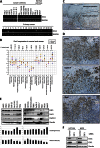
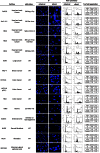
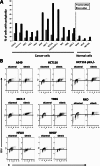
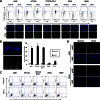
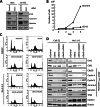

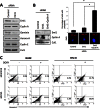

Similar articles
-
DNA damage triggers p21WAF1-dependent Emi1 down-regulation that maintains G2 arrest.Mol Biol Cell. 2009 Apr;20(7):1891-902. doi: 10.1091/mbc.e08-08-0818. Epub 2009 Feb 11. Mol Biol Cell. 2009. PMID: 19211842 Free PMC article.
-
Early mitotic inhibitor-1, an anaphase-promoting complex/cyclosome inhibitor, can control tumor cell proliferation in hepatocellular carcinoma: correlation with Skp2 stability and degradation of p27(Kip1).Hum Pathol. 2013 Mar;44(3):365-73. doi: 10.1016/j.humpath.2012.03.030. Epub 2012 Sep 17. Hum Pathol. 2013. PMID: 22995332
-
Polo-like kinase 1 depletion induces DNA damage in early S prior to caspase activation.Mol Cell Biol. 2009 May;29(10):2609-21. doi: 10.1128/MCB.01277-08. Epub 2009 Mar 16. Mol Cell Biol. 2009. PMID: 19289504 Free PMC article.
-
Defining the role of Emi1 in the DNA replication-segregation cycle.Chromosoma. 2008 Aug;117(4):333-8. doi: 10.1007/s00412-008-0152-x. Epub 2008 Mar 4. Chromosoma. 2008. PMID: 18317792 Review.
-
Non-mitotic functions of the Anaphase-Promoting Complex.Semin Cell Dev Biol. 2011 Aug;22(6):572-8. doi: 10.1016/j.semcdb.2011.03.010. Epub 2011 Mar 23. Semin Cell Dev Biol. 2011. PMID: 21439391 Review.
Cited by
-
A rapid screening system evaluates novel inhibitors of DNA methylation and suggests F-box proteins as potential therapeutic targets for high-risk neuroblastoma.Target Oncol. 2015 Dec;10(4):523-33. doi: 10.1007/s11523-014-0354-5. Epub 2015 Jan 6. Target Oncol. 2015. PMID: 25559288
-
Identification of aberrantly expressed F-box proteins in squamous-cell lung carcinoma.J Cancer Res Clin Oncol. 2018 Aug;144(8):1509-1521. doi: 10.1007/s00432-018-2653-1. Epub 2018 May 4. J Cancer Res Clin Oncol. 2018. PMID: 29728763 Free PMC article.
-
Ameloblastin induces tumor suppressive phenotype and enhances chemosensitivity to doxorubicin via Src-Stat3 inactivation in osteosarcoma.Sci Rep. 2017 Jan 5;7:40187. doi: 10.1038/srep40187. Sci Rep. 2017. PMID: 28054649 Free PMC article.
-
Inhibitors of Rho kinases (ROCK) induce multiple mitotic defects and synthetic lethality in BRCA2-deficient cells.Elife. 2023 Apr 19;12:e80254. doi: 10.7554/eLife.80254. Elife. 2023. PMID: 37073955 Free PMC article.
-
The Identification of Potential Therapeutic Targets for Cutaneous Squamous Cell Carcinoma.J Invest Dermatol. 2020 Jun;140(6):1154-1165.e5. doi: 10.1016/j.jid.2019.09.024. Epub 2019 Nov 6. J Invest Dermatol. 2020. PMID: 31705877 Free PMC article.
References
-
- Jemal A., Bray F., Center M. M., Ferlay J., Ward E., Forman D. (2011) Global cancer statistics. CA-Cancer J. Clin. 61, 69–90 - PubMed
-
- Takimoto C. H., Calvo E. (2008) Principles of Oncologic Pharmacotherapy in Cancer Management: A Multidisciplinary Approach (Pazdur R., Wagman L. D., Camphausen K. A., Hoskins W. J., eds) 11th Ed pp. 1–9, Cmp United Business Media, Manhasset, NY
-
- Pommier Y., Leteurtre F., Fesen M. R., Fujimori A., Bertrand R., Solary E., Kohlhagen G., Kohn K. W. (1994) Cellular determinants of sensitivity and resistance to DNA topoisomerase inhibitors. Cancer Invest. 12, 530–542 - PubMed
-
- Dancey J. E., Bedard P. L., Onetto N., Hudson T. J. (2012) The genetic basis for cancer treatment decisions. Cell 148, 409–420 - PubMed
-
- Reed S. (2003) Ratchets and clocks: the cell cycle, ubiquitylation and protein turnover. Nat. Rev. Mol. Cell Biol. 4, 855–864 - PubMed
Publication types
MeSH terms
Substances
LinkOut - more resources
Full Text Sources
Other Literature Sources
Research Materials
Miscellaneous

